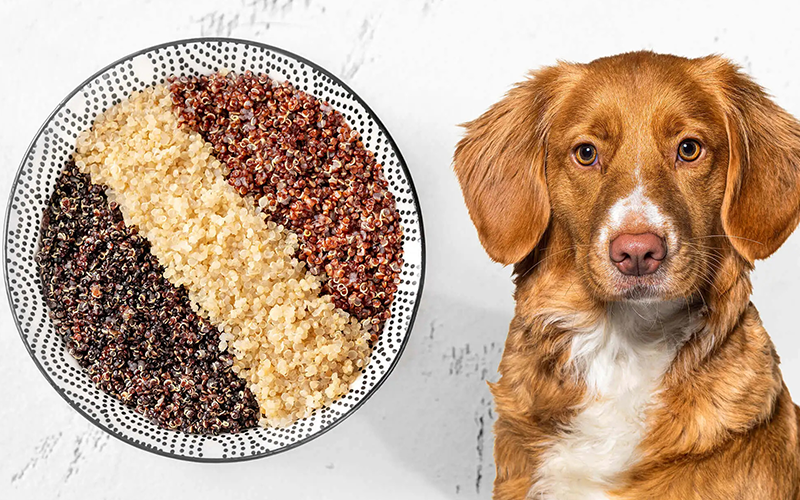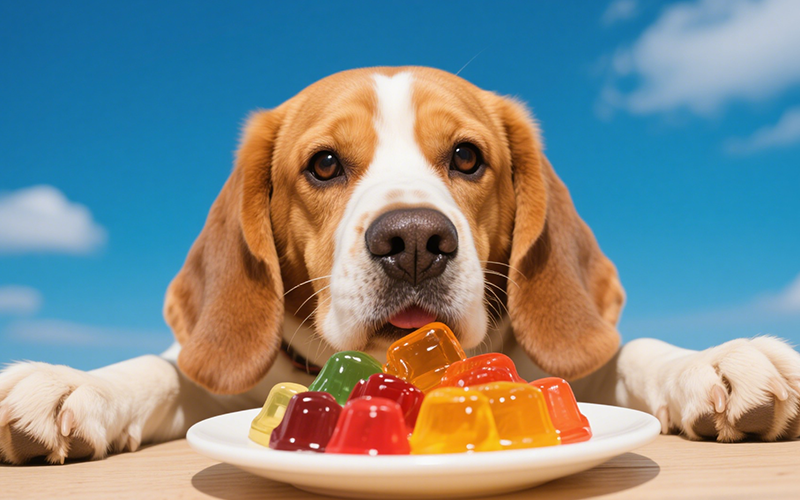Can Dogs Eat Quinoa? A Safe and Nutritious Grain for Your Pup?
- 1 Mar 2025 11:03
As a dog owner, you may be looking to add some variety to your pup’s diet and wonder: Can dogs eat quinoa? The good news is yes, quinoa is generally safe for dogs and can actually offer several nutritional benefits when served correctly. However, like with all foods, it should be given in moderation and prepared properly.
In this article, we’ll explore the benefits of quinoa for dogs, how to prepare it safely, and what precautions you should take before adding it to their bowl.

Why Quinoa is Safe for Dogs
Quinoa is a whole grain that is packed with nutrients, making it a potentially healthy addition to your dog’s diet. It is naturally gluten-free, high in protein, and contains beneficial fiber, vitamins, and minerals like magnesium, iron, and B-vitamins.
Nutritional Benefits of Quinoa for Dogs
✔ High in Protein – Quinoa provides a plant-based protein source that supports muscle growth and overall health.
✔ Rich in Fiber – Helps promote digestion and supports a healthy gut.
✔ Contains Essential Minerals – Including magnesium, iron, and manganese, which support bone health and immune function.
✔ Gluten-Free – A great option for dogs with gluten sensitivities or allergies.
Risks of Feeding Quinoa to Dogs
While quinoa has many benefits, it’s important to be aware of potential risks when feeding it to your dog. These include:
❌ Saponins – Raw quinoa contains saponins, a naturally occurring chemical compound that can be mildly toxic and cause stomach irritation or nausea if consumed in large quantities. Rinse quinoa thoroughly before cooking to remove saponins and reduce the risk.
❌ High in Fiber – While fiber is beneficial, too much quinoa can cause digestive upset, including gas or diarrhea, especially in dogs with sensitive stomachs.
❌ Portion Control – Quinoa should only be served as a side dish or treat, not as a staple part of your dog’s diet. Overfeeding any grain can contribute to weight gain or nutritional imbalances.
How to Safely Feed Quinoa to Your Dog
If you’d like to give quinoa to your dog, follow these safety guidelines:
✅ Cook It Thoroughly – Always cook quinoa before feeding it to your dog. Cooking makes it easier to digest and neutralizes the saponins.
✅ Rinse It Well – Before cooking, be sure to rinse quinoa thoroughly to remove any residual saponins.
✅ Serve in Moderation – Introduce quinoa slowly into your dog’s diet, and keep portions small. A spoonful or two mixed with their regular food is a good starting point.
✅ Avoid Additives – Do not add salt, butter, oils, or seasonings when preparing quinoa for your dog. Stick to plain, cooked quinoa.
✅ Watch for Digestive Issues – If your dog shows signs of discomfort, such as bloating, diarrhea, or gas, reduce the amount or discontinue it entirely.
Can Dogs Eat Quinoa with Other Ingredients?
If you’re thinking of adding quinoa to your dog’s meal, it’s important to be cautious about the other ingredients you add:
❌ No Salt or Spices – Never add salt, garlic, onion, or other seasonings that are toxic to dogs.
❌ Avoid Dairy – Dogs are often lactose intolerant, so don’t mix quinoa with cheese or dairy products.
✅ Add Safe Veggies – You can mix quinoa with dog-safe vegetables like carrots, peas, or green beans for added nutrition.
What About Quinoa for Dogs with Allergies or Sensitivities?
For dogs with known grain allergies or sensitivities, quinoa might still be a safe alternative since it’s gluten-free. However, always consult with your vet if your dog has specific food sensitivities before introducing quinoa or any new food.
Healthier Alternatives to Quinoa for Dogs
If quinoa is not suitable for your dog or if you’re looking for other grain options, here are some alternatives:
✅ Brown Rice – A simple, easy-to-digest grain that’s also gluten-free.
✅ Sweet Potatoes – A healthy, grain-free carbohydrate rich in fiber and antioxidants.
✅ Oats – Another safe, fiber-rich grain option that’s gentle on the stomach.
✅ Pumpkin – Excellent for digestion and full of vitamins.
Final Verdict: Can Dogs Eat Quinoa?
Yes, quinoa is safe for dogs when cooked properly and fed in moderation. It can provide several nutritional benefits, but it’s important to rinse it well, cook it thoroughly, and avoid adding any harmful ingredients. Always monitor your dog for any digestive issues when introducing new foods and consult your vet if you have concerns about food allergies or sensitivities.
For more information on your dog’s diet and health, consider using PettureX, an AI-powered pet health assistant. PettureX offers 24/7 pet consultations and pet image recognition to help you make informed decisions about your pet’s nutrition and overall well-being.
Related

Can Dogs Eat Peaches? Vet Explains Benefits, Cyanide Risks & Safe Serving
- 16 Apr 2025
Can Dogs Eat Mulberries? Vet Explains Safety, Benefits & Potential Risks
- 16 Apr 2025
Can Dogs Eat Mozzarella? Vet Explains the Cheesy Truth (Risks & Benefits)
- 16 Apr 2025
Can Dogs Eat Maple Syrup? The Sugary Truth & Why Vets Advise Against It
- 16 Apr 2025
Can Dogs Eat Mango Skin? Vet Explains Why It's a Risky Chew!
- 16 Apr 2025
Can Dogs Eat Mac n Cheese? Vet Explains Why This Comfort Food Is Unsafe!
- 16 Apr 2025
Can Dogs Eat Liver? Vet Guide to This Nutrient-Dense Organ Meat (Benefits & Risks!)
- 16 Apr 2025
Can Dogs Eat Licorice? The Sweet Danger & Glycyrrhizin Risk Explained by Vets
- 16 Apr 2025
Can Dogs Eat Lamb? Vet Insights on This Nutritious Meat Option
- 16 Apr 2025
Can Dogs Eat Jelly? The Sweet Truth About Sugar, Xylitol & Why Vets Say No!
- 16 Apr 2025
